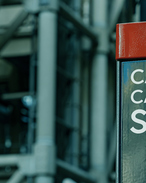-
SOLUTIONS
The CCS project, which at nameplate capacity is meant to send 4 million tonnes of CO2 per annum underground, is technically the world's largest but has never hit its target.
It is part of the wider Gorgon LNG project, which was greenlit by the WA government contingent on the CCS side being developed in tandem.
The notice, from the Department of Water and Environmental Regulation, does not carry a fine.
"The notice advises Chevron of their statement commitment to inject 80% of reservoir carbon dioxide from their gas processing operations over a five year rolling average," a statement sent to Energy News said.
It has fallen very short of this having only injected 5 million tonnes in its first five years of the LNG plant's operation.
Chevron was supposed to start injecting CO2 from offshore reservoirs into a sandstone layer 2000 metres underground when Train 1 came online in March 2016.
"Chevron has committed in their Environmental Performance Report (November 2021) to offset the shortfall (5.2 million tonnes) and use reasonable endeavours to complete the offset acquisition and surrender by July 2022," the statement continued.
Six weeks ago then-environment minister Amber-Jade Sanderson told Energy News the government would strictly oversee Chevron's $40 million investment in low-carbon initiatives in the state.
Reference points for suitable offsets may be those to be used by Waitsia Stage 2, the onshore Perth Basin conventional gas project shared by Mitsui and Beach Energy, and the Pilbara Energy Generation project.
Chevron announced mid-November it would buy 5.23 million tonnes of carbon offsets and invest A$40 million in lower carbon projects in Western Australia, after its Gorgon CCS project on Barrow Island failed to meet its nameplate CO2 injection rates.

Future of Energy Report: Nuclear Power in Australia 2024
Energy News Bulletin’s new report examines what the energy and resources industry thinks of the idea of a nuclear-powered Australia.

ENB CCS Report 2024
ENB’s CCS Report 2024 finds that CCS could be the much-needed magic bullet for Australia’s decarbonisation drive

ENB Cost Report 2023
ENB’s latest Cost Report findings provide optimism as investments in oil and gas, as well as new energy rise.

ENB Future of Energy Report 2023
ENB’s inaugural Future of Energy Report details the industry outlook on the medium-to-long-term future for the sector in the Asia Pacific region.



















